Masjid Quba: The First Mosque in Islamic History
Masjid Quba stands as a timeless symbol of devotion, humility, and Islamic heritage. Located in the city of Medina, Saudi Arabia, this mosque holds the esteemed title of being the first mosque ever built in Islam by Prophet Muhammad (ﷺ) and his companions.
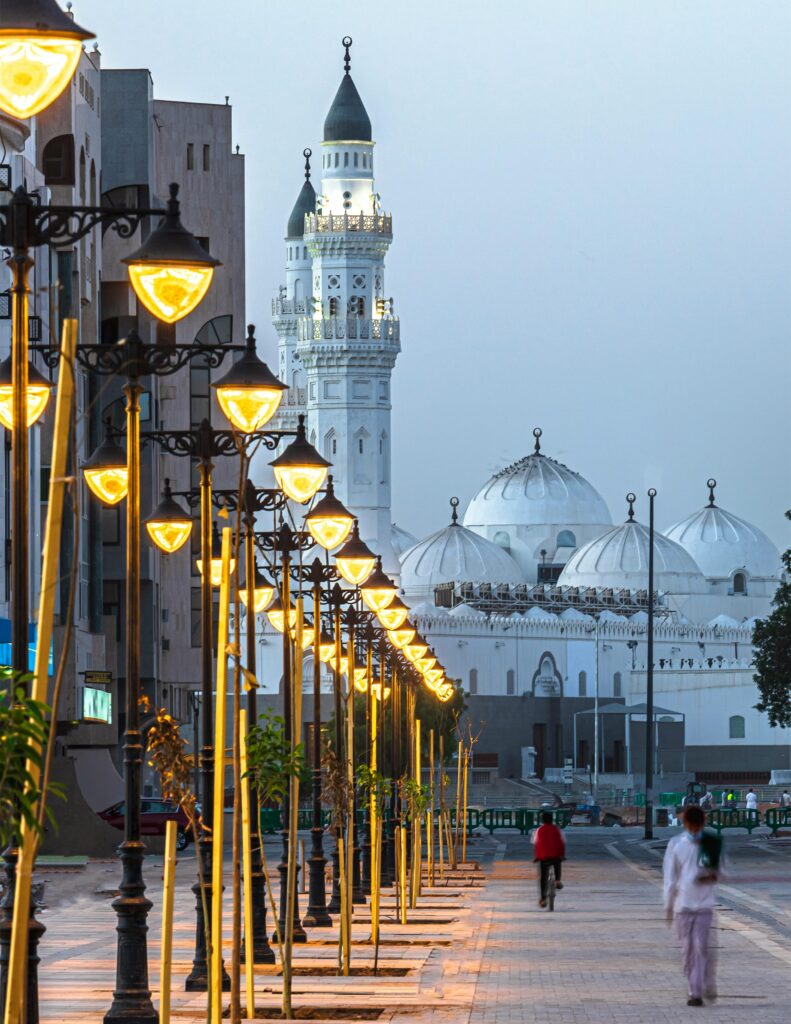
Steeped in spirituality and history, Masjid Quba is not only a significant religious landmark but also a deeply revered site that continues to attract millions of Muslims from around the world.
Historical Background of Masjid Quba
Foundation Laid by the Prophet Muhammad (ﷺ)
When Prophet Muhammad (ﷺ) migrated from Makkah to Medina during the Hijrah, he made a brief stop in a village called Quba. It was during this time, around 622 CE, that he and his companions began the construction of Masjid Quba.
This mosque was the first structure to be built for congregational worship in Islam. Unlike mosques built later, Masjid Quba was established under divine guidance and personal involvement of the Prophet himself.

“Whoever makes ablution at home and then goes and prays in Masjid Quba, he will have a reward like that of Umrah.”
— Sunan Ibn Majah, Hadith 1412 | Graded Sahih by Al-Albani
Initial Architecture and Construction
- Built using simple materials such as mud bricks and palm trunks.
- Designed for community prayer and gathering.
- Over time, the mosque has undergone various renovations by different Islamic rulers, while preserving its historical significance.
Religious Significance and Virtues
Reward Equivalent to Performing Umrah
One of the most well-known hadiths related to Masjid Quba highlights the immense spiritual reward of praying in the mosque:
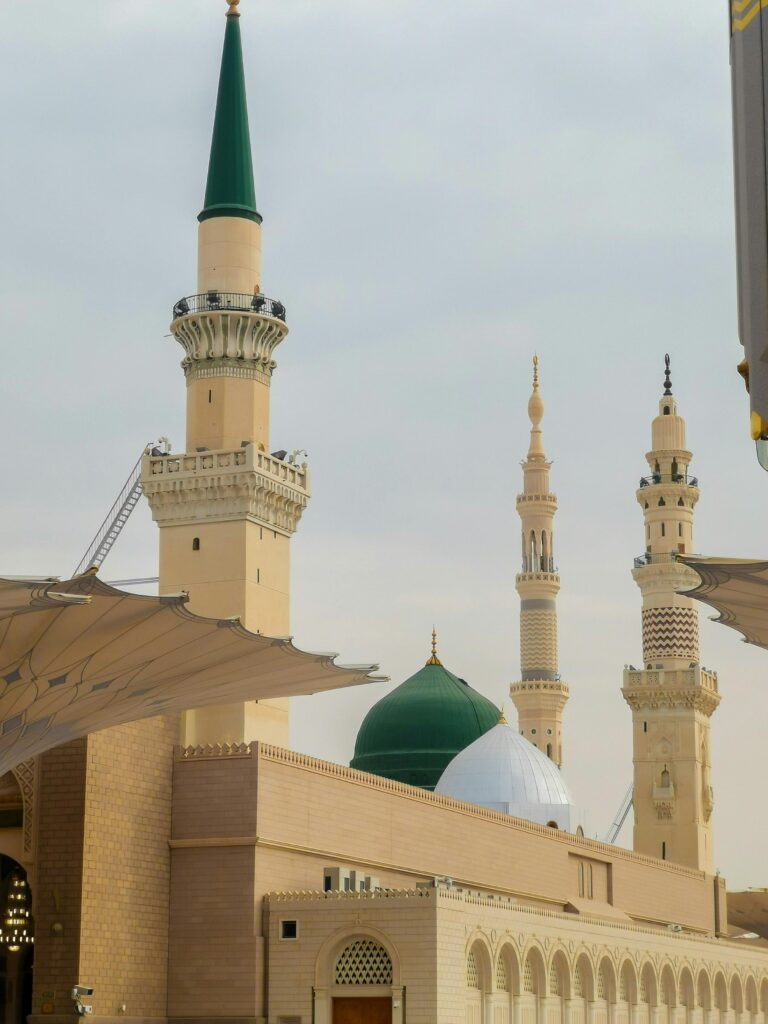
“The Prophet (ﷺ) used to go to the Mosque of Quba (sometimes) walking and sometimes riding.”
— Sahih al-Bukhari, Hadith 1193
“Whoever performs ablution at his home and then offers a prayer in Masjid Quba, he will have a reward like that of Umrah.”
— Sunan Ibn Majah, Hadith 1412
Praying in Masjid Quba is said to hold the same reward as performing an Umrah, making it a must-visit destination for pilgrims performing Hajj or Umrah.
Symbol of Purity and Devotion
The Quran makes reference to this blessed mosque:
“A mosque founded on piety from the first day is more worthy for you to stand in.”
— Surah At-Tawbah (9:108)
This verse is interpreted by many scholars as a reference to Masjid Quba, highlighting its foundation upon sincerity and righteousness.
Modern-Day Structure and Features
Expansion and Renovation Projects
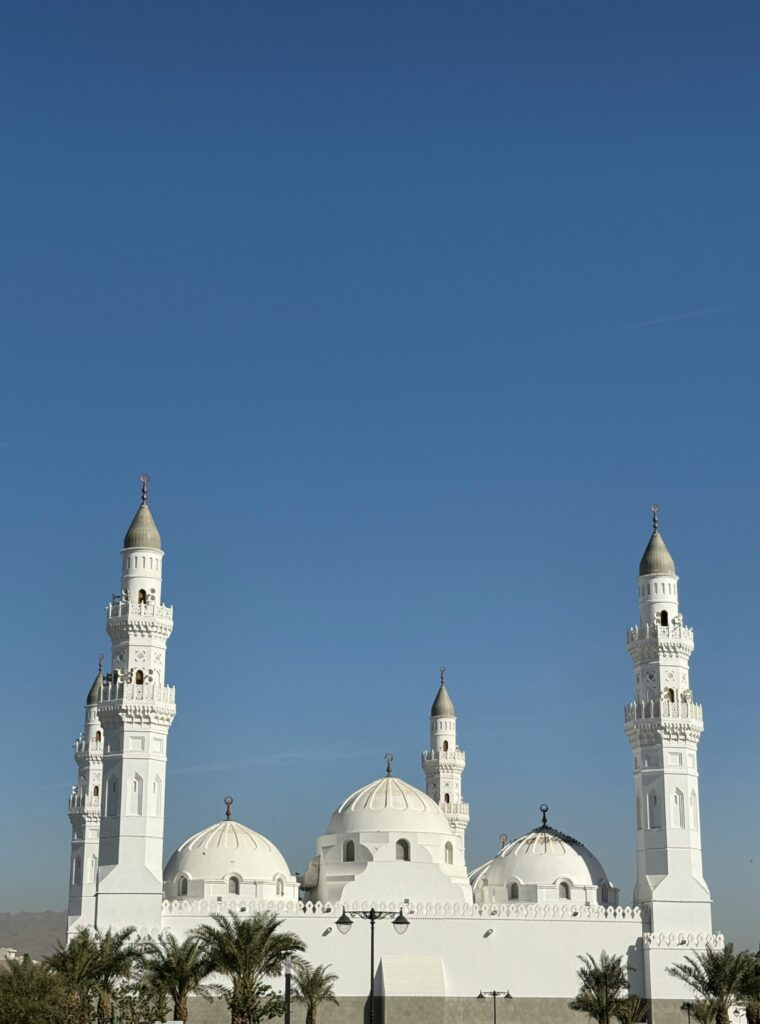
Masjid Quba has undergone numerous expansions and renovations to accommodate the increasing number of visitors.
| Feature | Description |
|---|---|
| Capacity | Over 20,000 worshippers |
| Minarets | Four |
| Domes | Multiple white domes |
| Facilities | Ablution areas, prayer halls, women’s section, parking |
The mosque today combines historical essence with modern architecture, creating a space that is both spiritually uplifting and practically accommodating.
Architectural Beauty
- Gleaming white exterior symbolizing purity.
- Spacious prayer hall with air conditioning and modern amenities.
- Elegant Arabic calligraphy and geometrical motifs.
Visiting Masjid Quba Today
Location and Accessibility
Masjid Quba is situated approximately 3 kilometers southeast of Masjid an-Nabawi in Medina. Visitors can easily reach it by car, bus, or even on foot — a practice reflecting the Prophet’s habit.
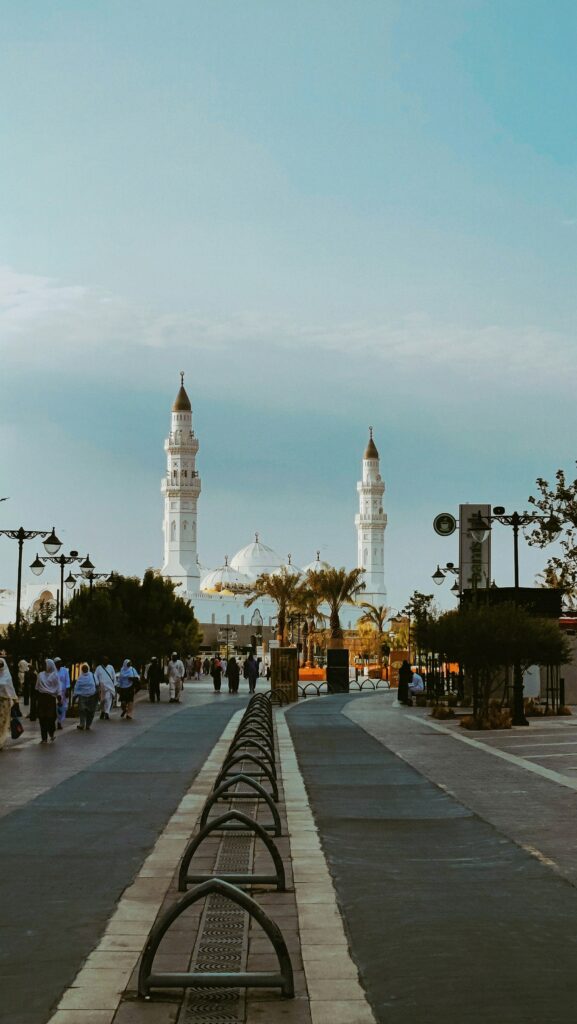
“The Prophet used to go to Masjid Quba every Saturday, walking and riding.”
— Sahih al-Bukhari, Hadith 1193
Many pilgrims make it a point to visit on Saturdays.
Emulating the tradition of the Prophet Muhammad (ﷺ).
Best Time to Visit
- Early morning for peace and spiritual ambiance.
- Saturdays, to align with prophetic practice.
- During Umrah and Hajj, with pre-planned visits due to crowding.
Etiquette and Guidelines for Visitors
When visiting Masjid Quba, it is recommended to:
- Perform ablution (wudu) before arrival.
- Pray at least two rak‘ahs inside the mosque.
- Dress modestly and maintain silence and respect.
Respecting the mosque’s sacred environment enhances the personal spiritual experience.
Frequently Asked Questions (FAQs)
Is there a dress code for Masjid Quba?
Yes, Islamic attire is required. Men should wear long garments; women must wear loose clothing and cover their heads.
Are non-Muslims allowed to visit Masjid Quba?
No, like all mosques in Medina, entry is restricted to Muslims only.
How is Masjid Quba different from Masjid an-Nabawi?
While Masjid an-Nabawi is the second mosque built in Islam and among the three most sacred places in Islam, Masjid Quba is recognized as the first mosque ever constructed, with its foundation based on piety and sincerity.
Key Takeaways
- Masjid Quba was the first mosque built in Islam by Prophet Muhammad (ﷺ) after Hijrah.
- Praying in this mosque yields the reward of performing Umrah, as per Sahih Hadith.
- The mosque is located a few kilometers from Masjid an-Nabawi in Medina.
- The structure has been preserved and expanded while maintaining its spiritual integrity.
Masjid Quba is more than just a building it is a symbol of faith, sacrifice, and purity in Islam. Visiting it connects worshippers to the earliest foundations of Islamic devotion and the legacy of the Prophet (ﷺ).
Book your ride and visit Masjid Quba from Masjid Al Nabawi


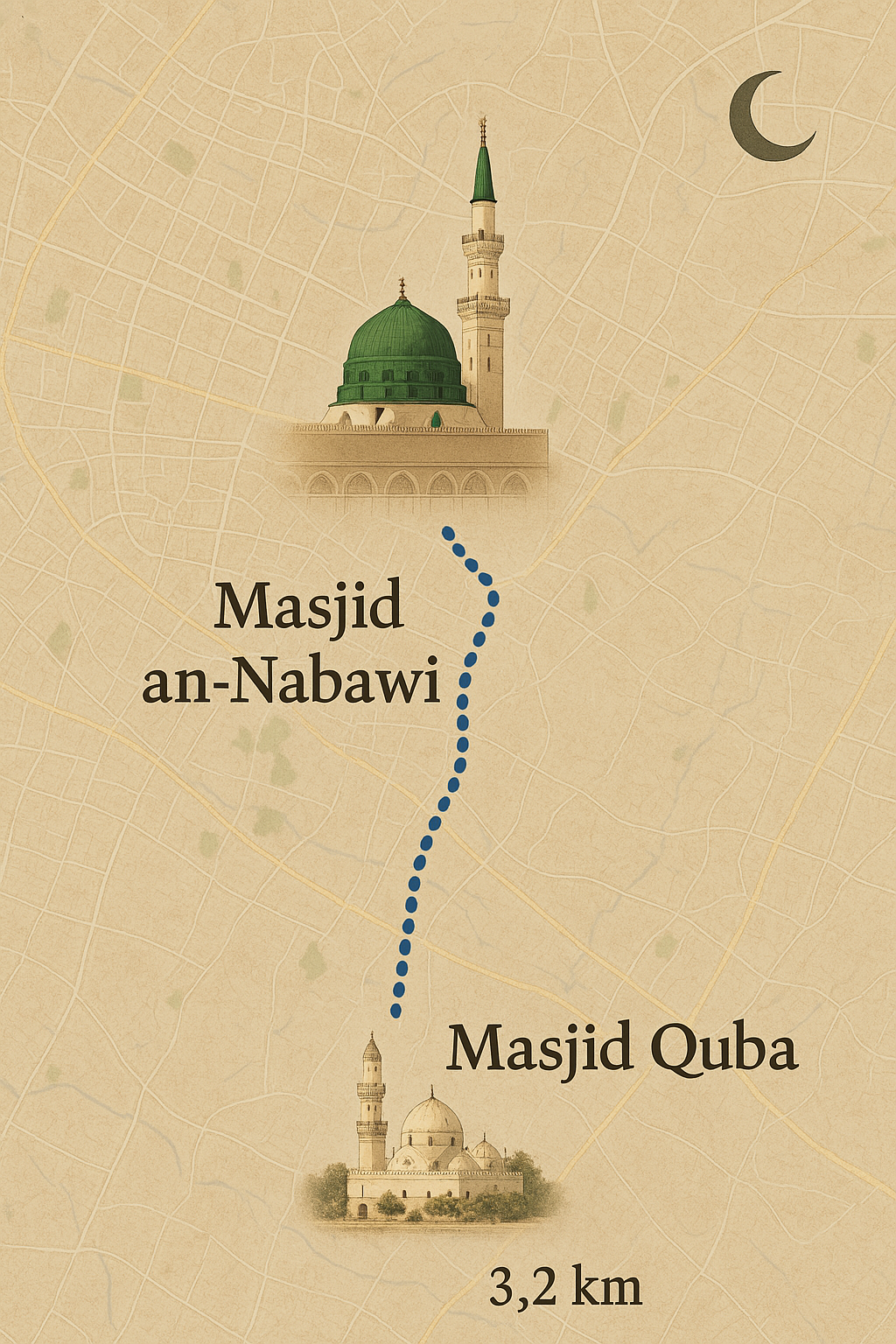


Comments are closed